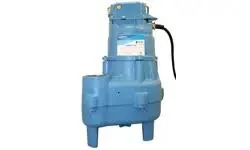English
- Afrikaans
- Albanian
- Amharic
- Arabic
- Armenian
- Azerbaijani
- Basque
- Belarusian
- Bengali
- Bosnian
- Bulgarian
- Catalan
- Cebuano
- Corsican
- Croatian
- Czech
- Danish
- Dutch
- English
- Esperanto
- Estonian
- Finnish
- French
- Frisian
- Galician
- Georgian
- German
- Greek
- Gujarati
- Haitian Creole
- hausa
- hawaiian
- Hebrew
- Hindi
- Miao
- Hungarian
- Icelandic
- igbo
- Indonesian
- irish
- Italian
- Japanese
- Javanese
- Kannada
- kazakh
- Khmer
- Rwandese
- Korean
- Kurdish
- Kyrgyz
- Lao
- Latin
- Latvian
- Lithuanian
- Luxembourgish
- Macedonian
- Malgashi
- Malay
- Malayalam
- Maltese
- Maori
- Marathi
- Mongolian
- Myanmar
- Nepali
- Norwegian
- Norwegian
- Occitan
- Pashto
- Persian
- Polish
- Portuguese
- Punjabi
- Romanian
- Russian
- Samoan
- Scottish Gaelic
- Serbian
- Sesotho
- Shona
- Sindhi
- Sinhala
- Slovak
- Slovenian
- Somali
- Spanish
- Sundanese
- Swahili
- Swedish
- Tagalog
- Tajik
- Tamil
- Tatar
- Telugu
- Thai
- Turkish
- Turkmen
- Ukrainian
- Urdu
- Uighur
- Uzbek
- Vietnamese
- Welsh
- Bantu
- Yiddish
- Yoruba
- Zulu
Telephone: +86 13120555503
Email: frank@cypump.com
Oct . 21, 2024 21:30 Back to list
septic pump tank system
Understanding the Septic Pump Tank System
A septic pump tank system is an essential component of many residential wastewater management systems, especially in rural or suburban areas where city sewer lines are not available. The purpose of the system is to safely handle and treat household sewage before it is dispersed into a drain field or leach field. Understanding how this system works can help homeowners maintain it properly and ensure it functions efficiently.
At the heart of a septic pump tank system is the septic tank, a watertight container buried underground. Wastewater from your home flows into the septic tank, where it undergoes a natural treatment process. Solid waste settles at the bottom, forming sludge, while lighter materials like grease float to the top, creating scum. The anaerobic bacteria present in the tank break down the organic matter in the sludge, reducing the volume of waste and minimizing harmful pathogens.
However, certain geographical features, such as a high water table or rocky soil, can impede the natural flow of effluent from the septic tank to the drain field. In these situations, a pump tank is necessary. The pump tank serves as a holding chamber that collects the wastewater once it reaches a certain level. A float switch mechanism activates the pump, which then moves the effluent to the drain field for further treatment through soil filtration.
septic pump tank system

One benefit of a septic pump tank system is its ability to handle wastewater effectively, even in challenging terrains. By utilizing gravity and mechanical pumping, these systems ensure that effluent is evenly distributed across the drain field, preventing localized saturation and minimizing the risk of system failure. Properly functioning systems can last for decades with regular maintenance.
Maintenance is crucial for the longevity of a septic pump tank system. Homeowners should schedule regular inspections to check for signs of wear and tear, monitor the pump's functionality, and assess the health of the septic tank. Routine pumping—typically every three to five years—helps remove accumulated sludge and scum, ensuring that your system operates efficiently.
In addition, homeowners should be mindful of what goes down the drains. Items like grease, non-biodegradable materials, and harsh chemicals can disrupt the balance of bacteria in the septic tank and lead to clogs or system failures. Practicing good habits, such as using biodegradable products and monitoring water usage, can contribute to the effective operation of the septic system.
In conclusion, a septic pump tank system is a vital component in wastewater management for many homes. Understanding its function and importance can help homeowners take the necessary steps to maintain it properly, ensuring effective treatment of sewage and protection of the environment. With regular care and attention, a septic pump tank system can serve a household for many years, providing peace of mind and sanitation.
-
Horizontal Split Case Pump with GPT-4 Turbo | High Efficiency
NewsAug.01,2025
-
ISG Series Pipeline Pump - Chi Yuan Pumps | High Efficiency, Durable Design
NewsAug.01,2025
-
Advanced Flue Gas Desulfurization Pump with GPT-4 Turbo | Durable & Efficient
NewsJul.31,2025
-
ISG Series Vertical Pipeline Pump - Chi Yuan Pumps | Advanced Hydraulic Design&Durable Construction
NewsJul.31,2025
-
ISG Series Vertical Pipeline Pump - Chi Yuan Pumps | Energy Efficient & Low Noise
NewsJul.31,2025
-
pipeline pump - Chi Yuan Pumps Co., LTD.|High Efficiency&Low Noise
NewsJul.31,2025










